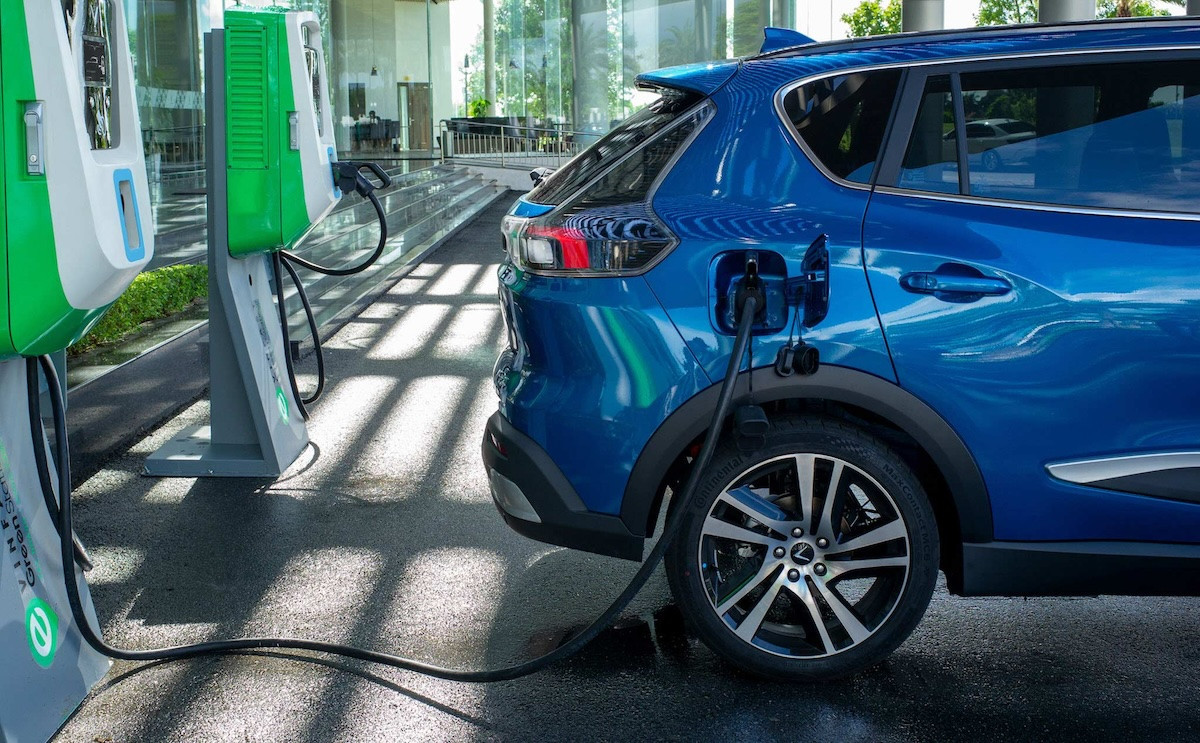
Ten years ago, Chinese auto manufacturers such as Lifan, Chery, Zotye and BYD brought low-cost products to Vietnam. But now, they are targeting the high-end market.
Chinese manufacturers have launched car models which directly compete with Japanese and South Korean rivals. Haima 7X, for example, has a suggested retail price of VND865 million. Haval H6 HEV is priced at VND1.096 billion and Link & Co 01 and 09 at VND999 million and VND2.199 billion.
Most prices of Chinese models are much more expensive than expected by Vietnamese consumers, raising the question if the quality deserves such high prices.
Some branding experts say that Chinese auto manufacturers are making every effort to eliminate the prejudice in Vietnamese customers’ minds that Chinese products mean cheap and low quality.
However, they believe that when positioning themselves on the same par with Japanese and South Korean rivals, Chinese brands are causing difficulties for themselves.
MG HS was marketed in July 2020 with the price of nearly VND1 billion and was expected to be a rival in the C-SUV market segment, competing with Hyundai Tucson, Honda CR-V and Mazda CX-5. However, the products over the last two years did not sell, so they left the market.
The Chinese brand could not even improve its sales after coming back to the market in January 2024 with a new version and lower selling prices (VND699-749 million). Sales agents launched a big sale promotion with discount of up to VND120 million for the model, and MG HS was even cheaper than products in the B-SUV market segment.
Haval H6 HEV is facing the same situation. It joined the Vietnamese market in August 2023 with the price of VND1.096 billion, which was higher than Mazda CX-5 (VND999 million) and Hyundai Tucson (VND959 million).
After two months of hitting the market with sales below expectations, the distributor of Haval products cut prices by VND244 million, now selling H6 HEV at VND852 million. Despite the sharp price cuts, the brand still struggles to find customers.
Haima 7X, which hit the market in late December 2023, was positioned as a mid-end product. However, with the selling price of VND865 million, higher than Toyota Innova Cross by VND55 million, Haima 7X could not catch attention from the public. Most recently, Haima’s sale agents slashed prices by VND140 million in an effort to improve sales of the MPV model.
According to Nguyen Manh Thang, an expert from Whatcar Vietnam, Chinese cars have high selling prices in Vietnam because of many reasons. First, most of the Chinese models introduced in Vietnam are imported from China which bear high tariffs of 47-70 percent.
Second, the technological content, comfort level and materials for manufacturing of Chinese cars have improved significantly. Third, Chinese brands are trying to position their products and eliminate the prejudice of Vietnamese people toward Chinese products.
Any opportunity for Chinese cars?
The biggest advantage of Chinese cars in Vietnam is in the selling price. Though Chinese car prices have become much higher, they are still lower than Japanese and South Korean products.
Experts believe that Chinese manufacturers have made heavy investment in R&D and developed new technologies, which allows them to create car models with higher quality.
They said Chinese are always very keen doing business and their massive arrivals in Vietnam over the last two years show they see opportunities in a market with great potential.
The problems that Chinese manufacturers need to solve if they want to conquer the Vietnamese market are not only high prices and doubt about product quality, but also distribution and maintenance networks.
Vietnamese always play safe when buying cars, which are considered a fortune for them, so they tend to choose American, Japanese and South Korean brands rather than Chinese. Therefore, it’ll take Chinese brands a lot of time to change Vietnamese customers’ mindset, experts said.
Dinh Quy